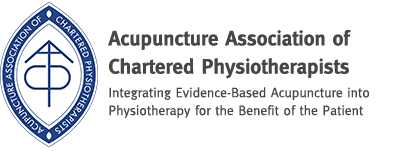Headaches are a common complaint, that most commonly are the result of referred pain from muscles and joints in the neck. Hands on treatment and exercise has been shown to be an effective strategy to improving symptoms when this is the case
Occasional headaches are a near-universal human experience. However, for some, ‘occasional’ becomes ‘frequent’, and they find themselves popping pills, cancelling plans, and generally suffering. So what can they do about it?
First it’s important to understand that there a many different types of headaches, with their own characteristics and causes. Most broadly, headaches can be divided into so-called ‘Primary’ headaches – the most common type, including the diagnoses of: Migraine, Tension Type Headaches, Cervicogenic Headaches, and those causes by dehydration; and ‘Secondary’ – which are rare, but much more serious (7)
Secondary headaches are those caused by another pathology, and are usually accompanied by other symptoms such as: fever, weight-loss, confusion, visual disturbances, or are sudden, progressive and severe. If this is the case it is important to seek medical attention (7)
Primary headaches make up the vast majority of headaches experienced, and are not related to any serious pathology – although can still have a very significant impact upon people’s lives. Both Cervicogenic Headaches, and Tension Type headaches are caused by referred pain from structures around the head, neck and jaw. Relief from headaches in these people is usually found by treating the symptomatic tissues in the neck, and through lifestyle changes that cause these tissues to become sensitive in the first place, Tension Type, and cervicogenic headaches are frequently treated by Osteopaths, indeed a large 2015 study found that the type of treatment performed by Osteopaths such as; massage; mobalisation; and stretching: to be as effective, or more effective than medication in the short and long term in managing these symptoms (1). Treatment may not always just be directed at tissues that are causing the referred pain, but also in related areas that be linked to the generation of excess muscular tension, such as the mid-back and shoulders – it always depends upon the individual!
Migraines are another common type of Primary headache, but despite their frequency are surprisingly poorly understood scientifically – with a multitude of tissues and mechanisms having being implicated (4,5,6). These headaches have a particular characteristics: they are usually felt only on one side of the head or face; are worse with exertion; are often associated with certain ‘triggers’; and are often accompanied by ‘aura’ – visual, auditory, or other sensory phenomena. These headaches are most commonly treated with medication with variable success. Some people find that taking time to fully understand the triggers of these headaches – foods, sleep patterns, emotions – they can reduce the frequency of attacks. There is also some research to support treatment of the neck in the management of headaches although the mechanisms of benefit here is little understood(2). The poorly understood causes, diverse presentation, and common misconceptions around Migraines (3) can make them a difficult condition to manage – but thorough exploration of all angles can often help people reduce the frequency of severity of these headaches.
Here at Central Osteopaths we have the skills and knowledge to help you understand your headaches, by taking the time to properly categorise and explore the dynamics of your headache, we can help you to live a pain free life. Feel free to contact us here
Blog compiled by by Matt Penman M.Ost, Head Osteopath at Central Osteopaths
(1)Mesa-Jiménez JA, Lozano-López C, Angulo-Diaz-Parreno S, Rodríguez-Fernández AL, De-la-Hoz_Aizpurua JL, Fernandez-de-Las-Penas C. Multimodal manual therapy vs. pharmacological care for management of tension type headache: A meta-analysis of randomized trials. Cephalalgia Vol. 35, issue 14, pp 1323-32, 2015
(2) Chabli. A, Tuchin. PJ, Russel. MB. (2011). Manual Therapies for migraine: a systemic review. Journal of Headache and Pain. Vol. 12, issue 2. pp 127-133.
(3) Hoffman. J, Recober, A. (2014). Migraine and triggers: post hoc ergo propter hoc? Current Pain and Headache Reports. Vol. 17, issue 10.
(4) Camara. CR, Rodriguez-Gutierrez. R, Monreal-Robels. R, Marfil-Rivera. A. (2016). Gastrointestinal disorders associated with migraine: A comprehensive review. World Journal of Gastroenterology. Vol. 22, issue 36. pp8149-8160
(5) Borsook.D, Erpelding. N, Lebel. A, Linnman. C, Veggeberg. R, Grant. PE, Beuttner. C, Becerra. L, Burnstein. R (2015). Sex and the Migraine Brain. Neurobiological Disorders. doi: 10.1016/j.nbd.2014.03.008
(6) Rist. PM, Buring. JE, Kruth. T. (2015) Dietary patterns according to headache and migraine status: A cross-sectional study. Cephalgia. Vol. 35, issue. 9






